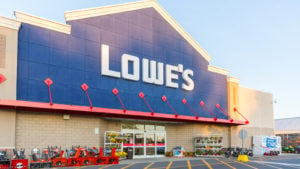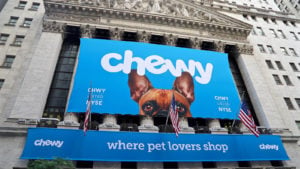Millennials are distinctly different from the Gen-X and Boomer generations before them and the Gen-Z generation that followed. But this isn’t going to be a “this time it’s different” investing pitch. The fact is that over the long haul you want to put your money in stocks that can work hard for you. That means looking at dividend-paying stocks that allow you to get the benefit of compounding. Like texting, it’s about being efficient, right?
But this doesn’t mean that it’s time to ignore growth. Quite the contrary with a minimum of 20 years or so until retirement, there’s ample time to build a nest egg even if you’re late to get started. And there are many quality growth stocks that will continue to grow well into the future.
Of course, past performance doesn’t ensure future performance. For much of the last 20 years, ultra-low interest rates were a tide that lifted most stocks. Still, the economy has been through multiple wars and the financial crisis in that time. And many of the stocks below have been resilient. With that in mind, here are seven retirement stocks for millennials that are likely to be there when you need them.
Archer-Daniels-Midland (ADM)

The investment thesis for Archer-Daniels-Midland (NYSE:ADM) is simple. They help to feed the world. But they do so by transforming ingredients found in nature into the nutrition that humans and animals need. It’s not a glamorous business model, but it’s a profitable one.
And for a generation that is increasingly concerned about the origin of their food, Archer-Daniels-Midland is one of the leaders in sustainability. The company recently introduced an agricultural biostimulant, NeoVita 43 that boosts corn yields. This is a key step to enhancing food security and improving agricultural sustainability.
Over the last 20 years, the ADM stock price has increased approximately 405%. The total return would be even larger since the company has paid a dividend in each of those 20 years. And not only has it paid a dividend, that dividend has grown in each of those 20 years – and for 30 years before that.
Microsoft (MSFT)

Any list of retirement stocks for millennials needs to include at least one tech stock. There are a lot of choices in this sector, but it’s hard to go against Microsoft (NASDAQ:MSFT). One reason is that the company has a substantial lead in artificial intelligence (AI) with its investment in OpenAI, the company that created ChatGPT.
Microsoft’s investment in generative AI is evident in its launch of its Microsoft Copilot 365 AI tool. At a time when investors are looking for revenue and earnings to support the wow factor of AI, Microsoft has a visible head start. And that’s likely just the beginning.
MSFT stock has grown over 1,300% in the last 20 years. And during that time, investors got a growing dividend. In fact, with 22 consecutive years of dividend growth, Microsoft is on the doorstep of becoming a dividend aristocrat – a distinction reserved for companies with at least 25 consecutive years of dividend growth.
Costco (COST)

The argument for Costco (NASDAQ:COST) as one of the retirement stocks for millennials is simple math. It makes money today and will continue to do so in the future. In fact, many millennials are likely Costco shoppers. That should be your first clue. Costo is a member’s only club. The fact that members continue to pay for the privilege of shopping at Costco says more about the perceived value more than the value of its hot dog deal.
Aside from recurring revenue from subscriptions, comparable store sales continue to rise despite the effects of inflation and interest rates. Revenue and earnings are also higher year-over-year (YoY) which shows not only resilient demand but the ability of Costco to pass along higher input costs.
Shares trade hands at over $500 a share. This is one you may have to wade into slowly. However, the takeaway for investors is that COST stock is an example of price and value. Sure, you have to pay a high price, but the value you receive will be far greater, particularly with a dividend that has increased for the last 20 consecutive years.
Lowe’s (LOW)

Millennials are well aware of the current state of the housing market. The last time inflation was this high, the oldest of this generation were in diapers, literally. But over the last 20 years, investors in Lowe’s (NYSE:LOW) have been rewarded with stock price growth of over 560%.
And that doesn’t include the company’s dividend. Lowe’s is another Dividend King on this list. The company has increased its dividend for 51 consecutive years, and with the company’s history of consistent profitability, that streak is in no danger of being broken.
While it’s true the stock does better when the housing market is strong, homeowners and renters still have to love the home they’re in. That keeps a solid floor on revenue and earnings. The company has made significant strides to improve the retail experience for millennial (and other) customers. Plus, with the nature of home improvement products gives the company a reasonable moat from e-commerce giants like Amazon.com (NASDAQ:AMZN).
Welltower (WELL)

Generation X may be the original “sandwich” generation, but the millennials are a close second. You’re familiar with the concerns over raising young children while at the same time caring for aging parents. Welltower (NYSE:WELL) is a real estate investment trust (REIT) that is focused on healthcare properties, particularly those of the long-term care variety. Demand for these properties is only expected to increase as the aging of our population accelerates.
WELL stock has only been trading publicly since December 2017, just under six years as of this writing. Still, the stock has generated a nice 34% gain for investors, albeit without significant volatility. That volatility is likely to be smoothed out as demand for these properties grows.
It’s important to note, however, that the primary reason to own a REIT is the income generated by its regular dividends. At this time, Welltower’s dividend is not overly impressive with a 2.84% yield. However, the company was able to maintain its dividend throughout 2020 and 2021.
Lululemon (LULU)

The last two stocks on this list of retirement stocks for millennials are not dividend payers, at least not yet. But that doesn’t mean they don’t have a place in your retirement portfolio. Both offer investors a chance for breakout growth. The first is Lululemon Athletica (NASDAQ:LULU). At a time when consumers are cutting back on discretionary spending, it’s noteworthy that LULU stock is up more than 27% in 2023.
The company continues to post year-over-year revenue and earnings growth despite many indications of a softening economy. That may still catch up to the athleisure retailer, but over time demand for the company’s products is likely to remain strong. Not only does that bode well for future stock price growth, but it also means buy-and-hold investors may be rewarded with a dividend in the future.
Like COST stock (listed above), LULU stock doesn’t come cheap with a forward P/E ratio of 33x. But with consistent earnings growth in the future, this is a stock that is worth its premium valuation.
Chewy (CHWY)

The last stock on this list is Chewy (NYSE:CHWY), the online retailer of pet supplies. After a meteoric rise in 2020 and 2021, revenue and earnings are normalizing, and the stock price is tanking. CHWY stock is down 43% in 2023 and is trading below its IPO price of 2019.
But this is about long-term investments. Millennials are acutely aware that we’re having fewer kids. And much of the love and attention that might otherwise go to a child is being poured into helping pets live their best lives.
That’s the long-term narrative for Chewy. The pet space is getting crowded. But Chewy is likely to have a first-mover advantage. And as the company expands into areas such as medicine and telehealth, it’s not hard to project strong growth in the company’s future. If that’s the case, a stock price around $21 will seem like a great value.
On the date of publication, Chris Markoch had a LONG position in LOW. The opinions expressed in this article are those of the writer, subject to the InvestorPlace.com Publishing Guidelines.
Chris Markoch is a freelance financial copywriter who has been covering the market for over five years. He has been writing for InvestorPlace since 2019.
